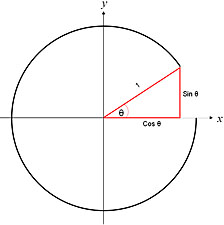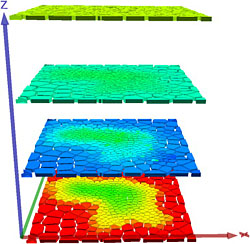The profession of land surveying has constantly evolved. Basic principles of trigonometry are still at the foundation of land measurements, but the roles of a land surveyor, the tools that are employed and the governance surrounding land divisions have been a continuous story of change. Today’s successful land surveyor has found a way to survive the changes to his business that have come with the automation of machines. He’s not building muscles by pounding hundreds of stakes in the ground, but instead marking property lines and locating various infrastructures. Three-dimensional digital drawings are driving the machines that used to rely on operators being guided by wooden stakes that were placed there by a land surveyor. This recent evolution within land surveying requires the land surveyor to embrace the changes that have come with our digital world.
Land Surveyor 2.0 must possess skills beyond land definition, planning and measurements. Weaving data from various sources into a cloud based resource is the new trend.
 The idea of Land Surveyor 2.0 is not mine. I heard it at a recent conference where the concept was presented by Mr. CheeHai Teo, the director of FIG (Fédération Intenationale des Géomètres). FIG is the oldest continuously operating organization devoted to the affairs of land surveyors worldwide. His ideas caught my curiosity and I could easily relate his comments to the current state of affairs with a land surveyor I know myself. Mr. Teo stated that Land Surveyor 2.0 must Measure, Model and Manage.
The idea of Land Surveyor 2.0 is not mine. I heard it at a recent conference where the concept was presented by Mr. CheeHai Teo, the director of FIG (Fédération Intenationale des Géomètres). FIG is the oldest continuously operating organization devoted to the affairs of land surveyors worldwide. His ideas caught my curiosity and I could easily relate his comments to the current state of affairs with a land surveyor I know myself. Mr. Teo stated that Land Surveyor 2.0 must Measure, Model and Manage.
What does this mean today on the modern construction site? For a land surveyor, it’s not about staking points and alignments anymore. The machines can cut the lines and trim the elevations to match the digital models without a lot of wood in the ground. It has become more about establishing control and setting property lines. According to Tim Smith of Professional Land Surveying Inc. in Southern California, the modern land surveyor has lost an intimacy with the land on many construction projects. He may see a project in the very early stages and then not again until it’s almost completely built. Now his decisions must be based on data and not experience. The data are not just his measurements, field notes and property descriptions; data cannot always be analyzed with maps and spreadsheets alone. Visualization of the data while applying a variety of filters is one method of bringing the data to life. This allows the data to be manipulated in new and useful ways.
The sources and the tools for analyzing data have been evolving alongside Land Surveyor 2.0. A familiar example of this is Google Earth. Virtually any place on the planet can be viewed from an aerial perspective and many places are even accompanied with ground based photographs that can be sewn together. Several surveyors I know today are using Google Earth to get an idea about the terrain surrounding their project site before they visit it in person. But Google Earth is not limited to imagery. There are various overlays that can be applied. Street names, public transportation corridors, bodies of waters, civil boundaries and other layers can be viewed on top of the satellite images.
 For Land Surveyor 2.0, these additional data layers include all of the data and meta-data from his previous surveys, active and passive monument information surrounding his project areas, inventory of available tools, licensing requirements, employees availability, customer schedules, finances, change orders, etc. As you can see, some of these layers are related to geography while others are related to resources or administration. Land Surveyor 2.0 must manage and integrate these layers into an efficient machine that allows him to access all of the data he needs to make informed choices in real-time. What does this look like and how does a company get there? The road is not easy, but it’s not impossible either. Many surveying firms have found that the Esri suite of software products can help them achieve these goals.
For Land Surveyor 2.0, these additional data layers include all of the data and meta-data from his previous surveys, active and passive monument information surrounding his project areas, inventory of available tools, licensing requirements, employees availability, customer schedules, finances, change orders, etc. As you can see, some of these layers are related to geography while others are related to resources or administration. Land Surveyor 2.0 must manage and integrate these layers into an efficient machine that allows him to access all of the data he needs to make informed choices in real-time. What does this look like and how does a company get there? The road is not easy, but it’s not impossible either. Many surveying firms have found that the Esri suite of software products can help them achieve these goals.
In a perfect world, Land Surveyor 2.0 has all of his historical work digitized and organized. He is able to locate the field notes for any particular survey within seconds or minutes without the necessity of digging though old log books and paper maps. He can filter his search to look by date, location, customer name, type of survey, etc. He can graphically display his projects on a live interactive map. The projects can be displayed through various filters so that trends over time or topic can be revealed. For instance, Land Surveyor 2.0 is able to state what percentage of his business is devoted to construction surveys. He can dig down and identify key customers and regions within these construction surveys. The financial aspect of the construction surveys is another layer so that determinations based on profitability can be intelligently made. Land Surveyor 2.0 does not waste a lot of time reconnoitering job sites because he can easily and quickly recover all of his field notes and control points from previous surveys surrounding the current area of interest. He accesses public data from the cloud for proximal surveys done by others and integrates all of this information into a virtual project.
Land Surveyor 2.0 is connected to the world in real-time. He is spatially enabled. His decisions are based on information that is up to date.
Digital drawings are shared on the web so that change orders and other adjustments can be updated constantly. land Surveyor 2.0 is now charged with providing analysis and advice to his customers based on this live and ever changing world. While historical experience is advantageous in the decision making process, land Surveyor 2.0 must have access and be able to analyze many sources of data and then weave them into a digital realization so that the machines can go out and move dirt into the right places. Land Surveyor 2.0 is a GIS professional….. This statement will probably cause angst among many licensed land surveyors. It shouldn’t. The task of maintaining and controlling these survey layers is very similar to what many GIS managers do with other data layers is very similar to what many GIS managers do with other data layers. Land Surveyor 2.0 is licensed to ensure the highest levels of precision and accuracy within the survey layers of data. Land Surveyor 2.0 has become a specialized GIS analyst that is authorized by his government to make decisions about land divisions and boundaries. The GIS and Surveying industries have been trying to “Bridge the Gap” for many years and land Surveyor 2.0 is closer to this bridge than ever before. Surveying firms that have adopted this model are doing so because this is what it takes to stay in business in their markets. They need the competitive edge that accompanies access to data. Their GIS, their way of managing their business is helping them make more money. credits to: Mr. Joe Sass of Machine Control Online




